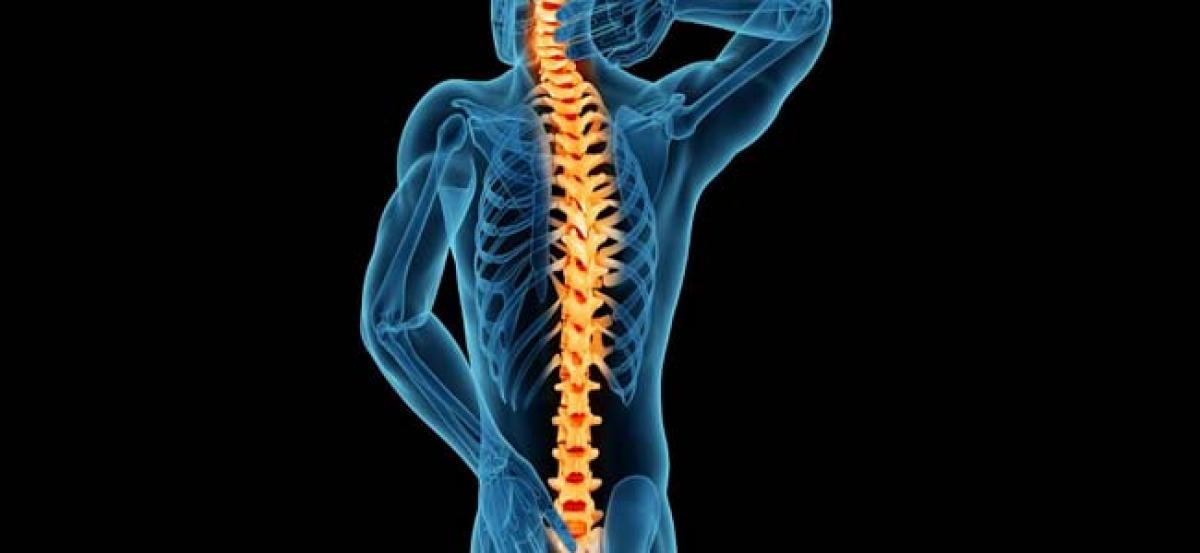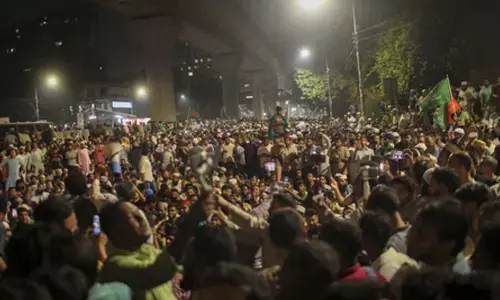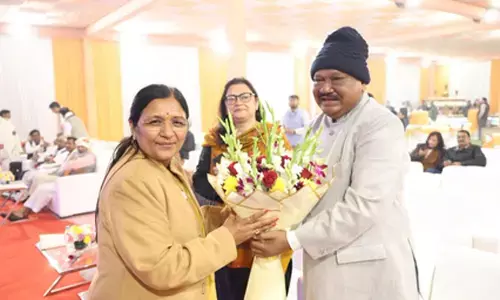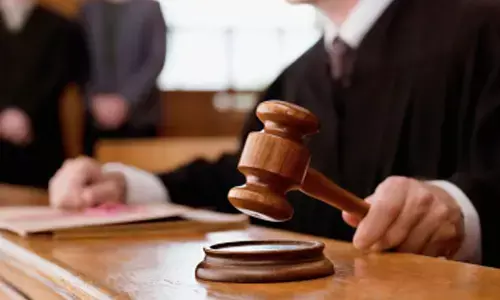Spinal Stenosis - A potential midlife crisis

Do you often search for a chair to sit while attending a social gathering Do you often experience numbness, weakness or a tingling sensation in any one or all of these areas like your feet, legs, hands and arms or face problems while walking or with balancing yourself If yes, then you could be at a risk of having spinal stenosis
New Delhi : Do you often search for a chair to sit while attending a social gathering? Do you often experience numbness, weakness or a tingling sensation in any one or all of these areas like your feet, legs, hands and arms; or face problems while walking or with balancing yourself? If yes, then you could be at a risk of having spinal stenosis.
The disease mostly affects people in middle and older age groups, where the space available for the nerves in our backbone becomes narrower than normal and causes a pinching effect on the nerves and spinal cord. Untreated severe spinal stenosis may progress and cause permanent numbness, weakness, balance problems, incontinence or urine/stool and may lead even to paralysis.
What Is Spinal Stenosis?
Dr Arun Bhanot of Columbia Asia Hospital, Gurugram, said, "Our spine is made up of a series of connected bones and shock-absorbing discs. It protects our spinal cord, a key part of the central nervous system that connects the brain to the body. The cord rests in the canal formed by the vertebrae. In spinal stenosis, the spinal canal becomes narrow and the open spaces between the vertebrae may start to get smaller. The stiffness can squeeze the spinal cord or the nerves around it, leading to pain, tingling or numbness in legs, arms or torso."
Spinal stenosis is a slowly progressive disease that does not cause much pain at rest or while sitting. However, when such patients stand and walk, the spinal cord gets compressed and the patient may feel pain, heaviness, tingling and numbness in the legs accompanied by weakness and a tendency to lose balance. But just after a few minutes of sitting, the symptoms improve and the patient can walk again for a few meters. There are various nonsurgical treatments and exercises to help keep the pain at bay.
What Causes Spinal Stenosis?
"Spinal stenosis is mainly caused by wear and tear of degenerative process that manifests in the form of arthritis, the condition caused by the breakdown of ligament, the cushiony material between bones and the development of bone tissue, and additionally thickening of different ligaments around the spinal cord and nerves. The degenerative procedure can lead to disc changes, thickening of the ligaments of the spine, and bone spurs. This can put weight on the spinal cord and spinal nerves. Cracked herniated plates may allow a portion of the delicate internal material to escape and push on the spinal cord or nerves," said Dr. Sumit Sinha of Paras Hospitals, Gurugram.
Besides this, the ligaments that hold the bones of spine together can turn out to be hardened and thickened after some time causing swell in the spinal canal. Likewise, any new development inside the spinal segment can encroach on the space accessible for spinal cord, hence leading to secondary spinal canal stenosis. Swelling of nearby tissue immediately after back medical procedure can put weight on the spinal cord or nerves.
Is There a Treatment?
Today, a minimally invasive surgical treatment is available for patients where the ailment can be treated using a small calibre high powered camera (endoscope) that creates a tiny 8 mm hole in the back and removes the pressure from the nerves very safely and effectively.
The benefit of the endoscopic technique is that the patient can avoid getting a big cut in the spine and his recovery is even faster. Some of these patients may require a microscopic decompression and use of metal screws and rods to stabilise their spine. However, in many such cases, the surgeon can avoid putting in any additional metal screws and rods in the spine by using the endoscopic technique, thus reducing the cost of treatment as well.
With advancement in other allied fields like medicine, cardiology and anesthesia, the patients even in their eighties and nineties can avail the benefits of surgery with a fairly good outcome.













